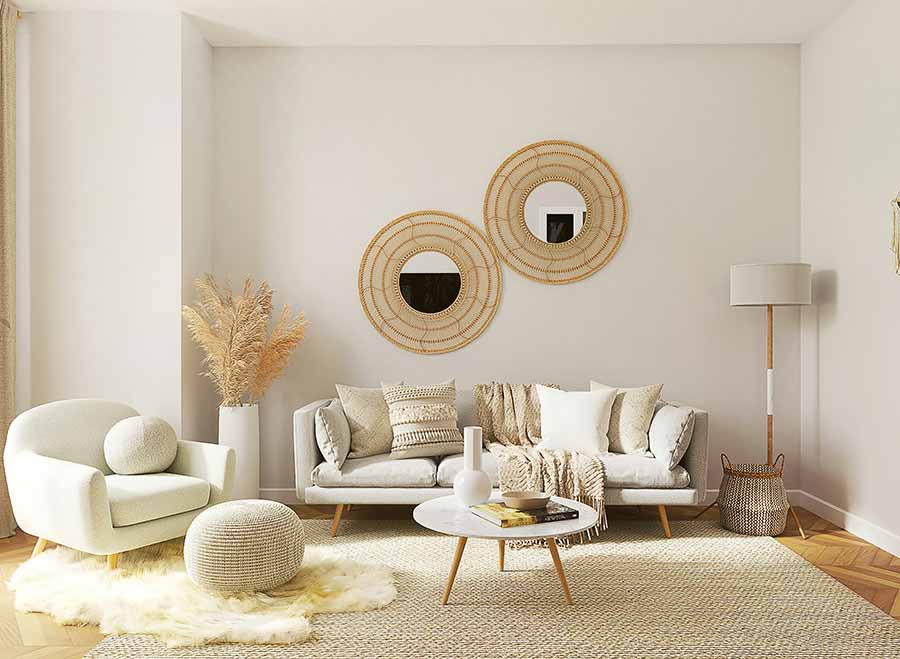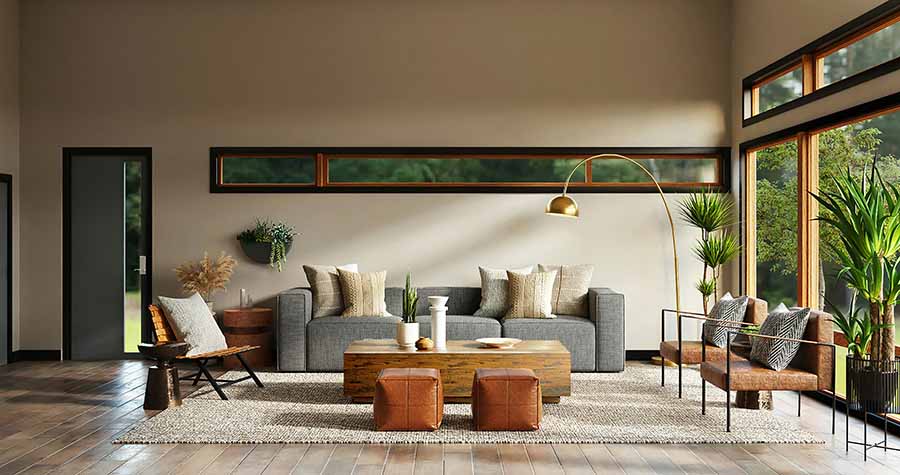9 Interior Design Mistakes That Cost Homeowners Money (and How to Avoid Them)
Making wise decisions that improve your home’s shape and function is the essence of interior design, which goes beyond simple aesthetics. However, if you’re not careful, even well-meaning design choices might have expensive consequences. Making poor decisions can have a negative impact on your finances, from picking the incorrect color to purchasing trendy furniture that quickly becomes outdated.
Here are nine typical interior design errors that homeowners make and how to prevent them.
1. Selecting Fashion Above Timelessness
The Error: Redesigning your home to fit the newest trends, such as ultra-minimalist rooms or millennial pink.
Why It’s Expensive: Trends shift frequently, so you’re more likely to renovate and spend more money if your room starts to feel antiquated.
The solution is to use historic underpinnings (neutral walls and furniture) and incorporate current styles with easily interchangeable cushions, rugs, or artwork.
2. Ignoring Adequate Lighting

The error: ignoring layered lighting entirely or depending just on overhead lighting.
Why It’s Expensive: Even a beautifully designed space can appear drab due to poor lighting, necessitating costly and needless decor alterations in an attempt to create mood.
The Solution: Use a combination of task (desk, under-cabinet), ambient (ceiling), and accent (wall sconces, table lamps) lighting. Dimmers can also improve mood and save energy.
3. Neglecting functionality
The Error: Prioritizing style over functionality, such as purchasing a gorgeous but uncomfortable sofa or unusable dining chairs.
The reason it’s expensive is because you’ll have to replace things that don’t fit your daily requirements.
The Solution: Consider how you will actually use the area and test furnishings before purchasing. If a design is not livable, it is not successful.
4. Purchasing Low-Quality, Inexpensive Furniture
The Error: Choosing the cheapest furnishings in order to quickly equip a space.
Why It’s Expensive: Low-quality items need to be replaced more frequently and frequently result in higher long-term expenses since they wear out or fail more quickly.
The solution is to get a few sturdy, well-made items for frequently used spaces (such as the bed or sofa). You can save costs on trendier products or accent pieces.
5. Using the wrong furniture scale
Using furniture that is either too large or too small for the room is the mistake.
Why It’s Expensive: Furniture that doesn’t fit properly might make your space feel small or empty, which can cause you to regret purchases and redesigns.
The Solution: Prior to purchasing, measure your area and make layout plans. To visualize scale, use resources like painter’s tape or online room planners.
6. Ignoring Window Treatments
The Error: Not covering windows or putting in shoddy drapes or shades.
Why It’s Expensive: Your energy costs may increase as a result of heat gain or loss from bare windows. Low-cost solutions might not provide adequate insulation or last long.
The solution is to spend money on high-quality, energy-saving window coverings. Lined shades, layered drapes, or blackout curtains combine fashion and functionality.
7. Ignoring Storage Options
The Error: Creating without taking future developments into account.
Why It’s Expensive: Clutter, disarray, and ultimately expensive storage furniture or upgrades are the results of a lack of storage.
The solution is to incorporate storage into your design, whether it be through built-in shelving or multipurpose pieces of furniture like benches and ottomans with secret storage.
8. Do-It-Yourself Overload (When to Hire a Professional)
The Error: Taking on large tasks alone in an attempt to cut costs.
Why It’s Expensive: Errors in cabinets, flooring, electrical work, and other areas can result in costly repairs (and even safety hazards).
The Solution: Recognize when to engage experts for structural alterations, plumbing, and rewiring, and when to do it yourself for painting and décor.
9. Not Including the Whole Picture in the Budget
The Error: Spending too much money on a few large objects and leaving little money for accessories, lighting, or finishing touches.
Why It’s Expensive: If a place is incomplete or uneven, it may not suit your needs, and you may have to pay more to “fill in the gaps” later.
The Solution: Create a comprehensive design plan. Set aside money for the entire space, including lighting, storage, and décor, but give priority to high-impact pieces.
Errors in interior design are frequently the result of inadequate planning or putting appearance before functionality. However, you can design a room that lasts both artistically and financially with a little forethought and the correct balance of beauty and usefulness.
By avoiding these typical mistakes, you’ll not only appreciate your house better but also save money.
